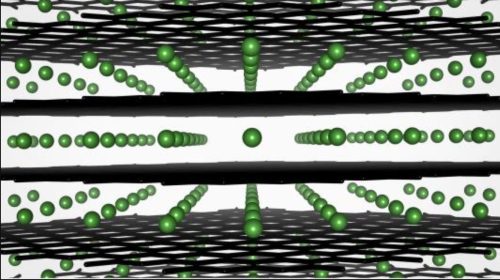Graphite is currently the most widely used anode material for commercial lithium-ion batteries. The growing market demand has put forward higher requirements for the lithium storage performance of graphite anode materials.
Graphite anode has the advantages of high specific capacity and low platform voltage, but it also has some disadvantages: for example, graphite has poor compatibility with electrolytes, and large volumes of solvent molecules and lithium ions often co-embedde into the graphite layer during the charge and discharge process. , causing the graphite layer to expand and peel off, thereby reducing battery capacity and life. The unevenness of the graphite surface makes it difficult to form a uniform and dense SEI film (passivation film) during the first charge and discharge process of the battery, resulting in low first charge and discharge efficiency and poor cycle performance.
Coating modification
The main function of surface coating is to cover the active sites on the surface of natural graphite, reduce the occurrence of irreversible side reactions, reduce the specific surface area of natural graphite, inhibit the formation of SEI film, isolate graphite particles from the electrolyte, and prevent solvent co-insertion. The capacity decreases, which restricts and buffers the volume expansion of graphite and increases cycle stability. Surface coatings mainly include amorphous carbon, metals and metal oxides.
Amorphous carbon coating
The interlayer spacing of amorphous carbon materials is larger than that of graphite, which can improve the diffusion performance of Li+ in it. This is equivalent to forming a buffer layer of Li+ on the outer surface of graphite, thus improving the high current charge and discharge performance of graphite materials. On the other hand, amorphous carbon comes into contact with the solvent to prevent the peeling of the graphite layer caused by the co-embedding of solvent molecules, expands the selection range of electrolyte systems and improves the cycle stability of electrode materials.
Metal and its oxide coating
The combination of natural graphite with metals and metal oxides is mainly achieved by deposition on the surface of graphite. By coating the graphite surface with a layer of metal (Ag, Ni, Sn, Zn, Al, etc.), the charge transfer resistance can be effectively reduced and the diffusion coefficient of lithium can be increased, thus inhibiting the decomposition of the electrolyte on the graphite surface and improving the electrochemical performance of the material. . In addition, coating metals and their oxides (NiO, MoO3, CuO, Fe2O3, etc.) can prevent the reaction between the electrolyte and graphite to a certain extent, reduce the irreversible capacity of the material, and improve charge and discharge efficiency.
The introduction of amorphous Al2O3 can improve the stability and rapid charge and discharge capabilities of graphite electrodes.
The microstructure of the electrode has a discontinuous pore network connected at the grain boundaries, and nano-Sn particles are embedded in the graphite through sintering. On the free surface of the electrode, graphite develops from block to flake. At the same time, a strong interfacial bonding is formed between the electrode and the current collector, which benefits from the formation of the interdiffusion zone.
Summary
Comprehensive research shows that graphite negative electrodes are coated through solid phase, gas phase or liquid phase carbonization deposition methods, and a layer of amorphous carbon protective film is modified on the surface to build a core-shell structure, making the “core” of the modified negative electrode material It retains the advantages of high capacity and low potential of graphite materials, and its “shell” has good electrolyte compatibility, effectively suppressing adverse effects such as graphite peeling, pulverization and volume expansion caused by the solvation effect. The electrochemical properties such as the first Coulombic efficiency and cycle stability of the corresponding anode material are significantly improved. However, surface coating has limited improvement in the energy density of electrode materials.
Therefore, according to the needs of relevant industries for lithium-ion battery anode materials with good comprehensive performance, in terms of macroscopic morphology, graphene and graphite can be effectively compounded; in terms of microstructure, defect engineering is actively carried out to regulate and optimize the microstructure of graphite. , and then modified by chemical modification and surface coating, the new graphitic carbon material prepared has good development prospects.


